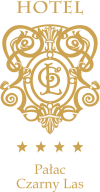|
Strona archiwalna!
Ta strona zawiera treści archiwalne, które nie były zmieniane po 23 września 2019 r. Jeśli chcesz wiedzieć więcej zapoznaj się z deklaracją dostępności
|
||||||
archiwum
 2006 2006
 2008 2008
 2010 2010
 2012 2012
 2014 2014 |
||||||

| ||||||
 |
 |
|||||

|
||||||
| strona główna założenia regulamin kalendarium wskazówki pobierz jury rejestracja zgłoszone projekty galeria gallery | archiwum kontakt | |||||
Description popularizing the research project The weakest of the forces of nature is always more powerful than the mightiest of men. We have been aware of our fragility against the elemental forces since the very dawn of humanity. In every corner of the Earth, people of all ethnic groups, cultures and languages, always tried to achieve the impossible, to make their lives easier by taming the forces of nature. In every culture there were shamans, druids or priests who possessed the hermetic knowledge, well-hidden from the commoners, of ways to negotiate with the forces of nature. Due to their knowledge and secret rites, they accompanied the most important events in people's lives: births, marriages and deaths. In such moments of life, when people did everything they possibly could, there was still the supernatural element to take care of. The important events, which provided food for the community, such as successful hunts, abundant harvests and breeding animals, did not depend entirely on people. They were often accompanied by colourful rituals. Many of them, in time, became religious ones. Abstract In the middle of the 19th century, near Płock appeared Oskar Kolberg. This invaluable for Polish culture researcher said that the part of Mazovia had undergone such a great civilization-al transformation that for people interested in traditional culture it did not present any special value. Professor Reinfuss, who visited the region at the beginning of the 1950s to assess the state of folk culture, represented the same point of view . Similar opinions of the lack of oppor-tunities for research on authentic culture can be also found today. Research experience of ethnologists working in the Mazovian Museum in Płock shows that it is still possible to come across rites, customs unknown or considered either extinct or, for various reasons, not de-scribed and thoroughly analysed . One of the more unusual examples of extremely interesting yet not fully recognized phenomena may be the night ceremony of initiation which was docu-mented and described by ethnographers from Plock. The ceremony is performed not in Va-nuatu or Papua New Guinea, but in a Łowicz village. Ethnographers from the Płock museum were the first researchers who took part in the entire course of the ceremony called "walking with a flag" (or walking the fields). Participating in the ritual they recorded and described all the individual parts of the ceremony, roles of those participating in it and their meaning. A photo report showing the entire course of the ceremony was created . It shows village dwellers of Płaskocin (only males) running around their fields, with the flag at night. In this way, they be-lieve that their fields will be ritually protected against disasters. It takes place on Easter Monday and a boy taking part in it for the first time is called "fryc" (novice). He has perform many tasks and after completing the long ceremony he is included in the group of men. The expedition took place in 2013. Its result was a museum exhibition and publication accompanying it. The gathered information, films and the photos are a valuable document and source for further research. In the following years researchers observed "walking with a flag" in other villages of Łowicz Mazovia region. They showed diversity of novices' trials and ritual activities in different villages. This diversity is a particularly interesting material for analyses of the semiotic culture, not only of the region.
|


|
|||||












